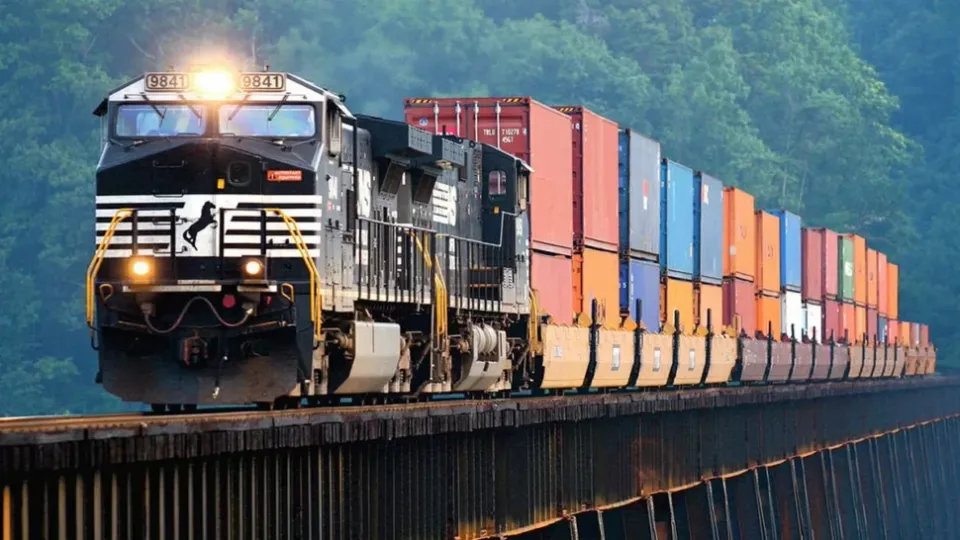The Evolution and Future of Rail Logistics in India

Rail logistics in India has been a cornerstone of the country's supply chain infrastructure, connecting industries, ports, and consumers across a vast and diverse landscape. With the rise of new technologies, growing trade demands, and government initiatives, India's rail logistics sector is undergoing a transformative phase that promises to redefine its role in the global logistics ecosystem.
Why Rail Logistics Matters
India's rail network is one of the largest in the world, spanning over 67,000 kilometers and catering to a population of 1.4 billion. Railways are vital for:
- Cost-effective transportation: Rail freight is significantly cheaper compared to road transport, especially for bulk goods.
- Environmental sustainability: Rail transport produces lower emissions compared to road and air transport, aligning with India’s climate goals.
- Connectivity: The rail network connects remote regions to urban hubs, enabling the movement of goods across the country seamlessly.
Current Landscape of Rail Logistics
The Indian rail logistics sector has historically been dominated by bulk commodities such as coal, cement, steel, and food grains. However, with India’s economic diversification, rail logistics is expanding its focus to include containerized goods, e-commerce deliveries, and perishables.
- Freight Corridors: The introduction of Dedicated Freight Corridors (DFCs) has been a game-changer. These high-speed, high-capacity corridors are designed to reduce transit time and increase reliability for freight movement.
- Privatization Efforts: The government has invited private players to invest in rail logistics, offering opportunities for modernization, better services, and competitive pricing.
- Technology Integration: Digital solutions such as real-time tracking, e-billing, and AI-driven predictive analytics are becoming integral to improving efficiency.
Challenges in Rail Logistics
Despite its advantages, rail logistics in India faces several hurdles:
- Infrastructure Bottlenecks: Congestion in key rail routes and outdated infrastructure hamper the efficiency of rail logistics.
- Last-Mile Connectivity: Many industrial zones and agricultural areas lack direct rail access, making road transport a necessary complement.
- Operational Inefficiencies: Delays in freight scheduling and the dependence on manual processes reduce competitiveness.
- High Competition: Road transport dominates due to its flexibility, despite being more expensive.
Key Government Initiatives
The Indian government is playing a proactive role in addressing these challenges and modernizing rail logistics:
- Dedicated Freight Corridors: The Eastern and Western DFCs aim to decongest passenger routes and create a parallel freight transport network.
- PM Gati Shakti Master Plan: This initiative integrates various logistics modes, including railways, for seamless cargo movement.
- Freight Incentives: Reduced tariffs for certain commodities and containerized cargo encourage industries to shift to rail transport.
- Digital Freight Operations: The Railways is actively implementing e-platforms for booking, tracking, and managing freight.
Emerging Trends in Rail Logistics
- Containerization: Increased use of containers for transporting goods is making rail freight more versatile and accessible for non-bulk commodities.
- IoT and Automation: Smart tracking of goods using IoT-enabled devices is enhancing visibility and reducing losses during transit.
- E-Commerce Integration: Rail logistics is increasingly supporting e-commerce giants in moving goods quickly across states.
- Green Initiatives: Electrification of rail routes is reducing carbon emissions, aligning rail transport with sustainability goals.
Opportunities for Growth
The future of rail logistics in India holds immense potential:
- Private Investment: Opportunities for public-private partnerships (PPPs) in developing terminals, logistics parks, and freight trains.
- Multimodal Logistics: Integrating rail with road, air, and waterways to create seamless supply chains.
- Export Competitiveness: Faster and cheaper rail freight can help Indian exporters compete globally by reducing logistics costs.
- AI-Driven Solutions: Predictive maintenance, demand forecasting, and dynamic pricing can revolutionize freight management.
Conclusion
India's rail logistics sector is at the cusp of transformation. With the government’s focus on infrastructure development and private players entering the market, rail logistics is set to become a vital pillar of India's economy. However, overcoming challenges such as infrastructure gaps and last-mile connectivity will be crucial.
As we look to the future, rail logistics in India promises to be a key enabler of economic growth, sustainability, and global trade competitiveness. For businesses and logistics providers, now is the time to invest in and align with this growing sector.
